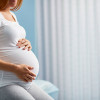Secret Suffering: 6 Signs Your Daughter Might Have Endometriosis
 Cramps, pelvic pain and an upset stomach are symptoms every adolescent or woman suffers at one point or another during their monthly cycles. So, how can you tell when the pain is a sign of something more? Endometriosis is a mystery that’s not only extremely painful but also very hard to diagnose. In fact, it often goes undiagnosed for two to five years, especially in adolescents.
Cramps, pelvic pain and an upset stomach are symptoms every adolescent or woman suffers at one point or another during their monthly cycles. So, how can you tell when the pain is a sign of something more? Endometriosis is a mystery that’s not only extremely painful but also very hard to diagnose. In fact, it often goes undiagnosed for two to five years, especially in adolescents.
Worried your daughter might be suffering in silence? We sought the advice of Rachael L. Polis, D.O., MPH, FACOG, a pediatric and adolescent gynecologist at Crozer-Keystone Health System, to shed some light on the tell-tale signs. Here’s what she says to look out for:
Uncontrollable Cramps
It’s normal to have mild cramps during your menstrual cycle but, according to Dr. Polis, if the cramps are so severe they cause an adolescent to miss school and can’t be easily controlled, she may have endometriosis and should seek medical advice.
Medication Doesn’t Ease Pain
Additionally, if cramps cannot be controlled by over-the-counter medication like ibuprofen, or even simple fixes like a heating pad, she may be suffering from endometriosis. According to Dr. Polis, the onset of these extremely painful menstrual cycles usually occurs within the first two years after the adolescent’s first period.
Periods Disrupting Daily Activities
Every woman has had a rough cycle where she’s missed her workout class or decided to take a personal day to sleep it off. However, if your daughter consistently misses school, extracurricular activities or exercise routines, and has difficulty sleeping, you should have her screened.
Pain Outside of Her Cycle
Symptoms of endometriosis don’t only appear during a girl’s cycle, they can also show up independently at any time, usually in the form of severe pelvic pain, known as acyclic pelvic pain. There are also additional warning signs you can watch out for during and outside of her cycle like back pain, diarrhea or constipation, frequent urination, painful bowel movements and nausea.
Bleeding Beyond a Week
Adolescent patients usually have a menstrual cycle that occurs every 21-45 days, according to Dr. Polis. If there is bleeding outside of that window, it’s considered abnormal and should be checked out. Additionally, periods that last longer than a week, heavy bleeding during a period and bleeding after sex are all abnormal and should be evaluated by an OB/GYN.
You Have a Family History
Dr. Polis also warns that there’s evidence suggesting endometriosis is hereditary. If you or your mother, sisters or aunts have endometriosis, your daughter is seven to 10 times more likely to suffer as well.
How You Can Help
If you believe your daughter is experiencing any of the symptoms above, it’s wise to consult an OB/GYN specializing in adolescent gynecology. Dr. Polis urges you to act fast to ensure your daughter’s future health and fertility. “A delay in diagnosis can lead to chronic pain and scarring, and can affect future fertility,” she says.
Although there is no cure for endometriosis, there are methods to ease the pain. Medical suppression options like birth control pills and intrauterine devices are available, as well as medication that temporarily shuts off hormones made by the ovaries and stops menstrual cycles from occurring.
Dr. Polis also encourages non-medical practices such as physical therapy, acupuncture and mindfulness exercises. “Relaxation techniques such as yoga, adequate sleep and eating a well-balanced diet are also important tools that can help with pain,” she suggests.
For more information about Crozer-Keystone’s pediatric and adolescent gynecology services, click here.
This is a paid partnership between Crozer-Keystone Health System and Philadelphia Magazine

